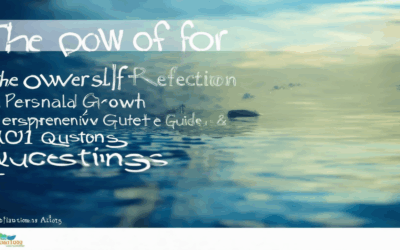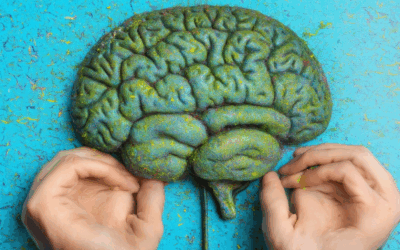In today’s fast-paced and demanding work environment, many professionals struggle with stress, burnout, and decreased productivity. Practicing mindfulness at work has emerged as a powerful tool to combat these challenges, offering a way to maintain focus, reduce stress, and foster a more balanced and productive mindset. Whether you’re new to mindfulness or looking to deepen your practice, this article explores practical strategies and frameworks to help you integrate mindfulness into your daily routine. From mastering the 5 R’s of mindfulness to understanding the 3 C’s and 4 P’s, we’ll guide you through the essential principles and practices that can transform your work experience. By incorporating mindfulness into your workflow, you can unlock greater clarity, creativity, and overall well-being, paving the way for sustained success and fulfillment in your professional life.

How to Practice Mindfulness at Work
Mindfulness at work can significantly enhance your productivity, reduce stress, and improve overall job satisfaction. Here are practical steps to incorporate mindfulness into your daily routine:
- Set Boundaries with Technology : Schedule specific times to check emails or social media. Use a timer to stay focused on your tasks before switching contexts.
- Incorporate Small Practices : Dedicate a few minutes each day for meditation or a short walk around the office. Explore apps like Headspace for guided sessions.
- Practice Mindful Breathing : Find a quiet spot near your desk and engage in slow, deep breathing exercises to relax and reduce stress.
- Challenge Negative Thoughts : Recognize and reframe frustrating or anxiety-inducing thoughts. Consider journaling or discussing them with supportive colleagues.
- Focus on the Present Moment : Close your eyes for a few moments or pay attention to your surroundings, focusing on sensory experiences like your breath or the feel of your chair.
- Set Daily Intentions : Begin each day with a brief intention, such as “Today, I will stay focused and complete my tasks efficiently,” and write it down to reinforce your goals.
- Engage in Mindful Listening : Fully attend to speakers in meetings by avoiding distractions and asking questions to show engagement and respect.
- Practice Gratitude : Take a moment to appreciate positive events or gestures, like a kind colleague or a successful project outcome.
- Stay Physical : Incorporate stretching or short walks into your day to boost energy and improve circulation. Keep a water bottle handy to remind yourself to stay hydrated.
By integrating these mindfulness practices into your workday, you can create a balanced and fulfilling professional experience. Start with small, manageable steps and gradually build a consistent routine that suits your needs. Explore company-wide resources or workshops to further develop your mindfulness skills and foster a supportive work environment.
The Five R’s of Mindfulness
The practice of mindfulness is often broken down into five key components, known as the “Five R’s.” These principles guide individuals in developing a deeper understanding of themselves and their surroundings, fostering mental clarity and emotional balance.
- Reflect : This involves turning inward to explore your thoughts, emotions, and experiences. By reflecting, you gain insight into your inner world, helping you understand your reactions and responses better.
- Release : This step encourages the letting go of negative thoughts, beliefs, or habits that no longer serve you. Releasing allows for emotional freedom and mental liberation.
- Rest : Mindfulness practices often emphasize the importance of resting in the present moment. This means finding stillness and peace within yourself, allowing stress and anxiety to dissolve.
- Respond : Once you’ve reflected and released, you’re able to respond to situations with greater awareness and compassion. This leads to more thoughtful and kind actions.
- Relate : Finally, relating connects you to your environment and others. Through mindful relationships, you develop empathy and understanding, building stronger connections with those around you.
By embracing these five R’s, you cultivate a mindful lifestyle that enhances your well-being and enriches your daily life.

What are the 3 C’s of mindfulness?
- Connection: Mindfulness involves deeply connecting with the present moment through awareness and intentionality.
- Compassion: Cultivating kindness and understanding toward oneself, fostering a non-judgmental mindset.
- Control: Developing the ability to influence and manage one’s thoughts, emotions, and reactions in a constructive way.

The 4 Ps of Mindfulness
Mindfulness is often broken down into four key components, known as the “4 Ps” of mindfulness. These principles help cultivate a deeper understanding of mindfulness and its application in daily life. Here’s a closer look at each:
- Presence :
Presence is the foundation of mindfulness. It means being fully engaged in the moment, without distractions. When you’re present, you’re able to observe your thoughts, feelings, and surroundings with clarity and non-judgment. This helps you connect more deeply with yourself and others.
Tip : Practice mindfulness through activities like meditation, deep breathing exercises, or simply paying attention to your surroundings during moments of stillness. - Purpose :
Purpose gives mindfulness direction and intentionality. It’s about aligning your actions with your values and goals. By setting intentions, you can focus your mindfulness efforts on specific aspects of your life, whether it’s personal growth, relationships, or stress management.
Tip : Start your day by setting an intention, such as “Today, I will practice compassion towards myself and others.” - Practice :
Regular practice is essential for developing mindfulness habits. It’s not just about occasional moments of calm; it’s about building a consistent routine that supports your mental and emotional well-being. Over time, mindfulness becomes second nature.
Tip : Incorporate small mindfulness practices into your daily routine, like taking a few minutes to stretch or meditate in the morning. - Perspective :
Perspective is about seeing things from a new angle. It involves letting go of judgment and viewing challenges as opportunities for growth. A mindful perspective helps you navigate difficult situations with greater ease and understanding.
Tip : When faced with stress, pause and ask yourself, “What’s the most important thing right now?” This shift in perspective can help you find clarity and peace.
By embracing these four pillars of mindfulness, you can create a more balanced and fulfilling life. Remember, mindfulness is a journey, and with consistent effort, it can become a powerful tool for transforming your life.
What Are the 3 A’s of Mindfulness?
The practice of mindfulness is rooted in three core principles, often referred to as the “3 A’s” of mindfulness: Awareness, Acceptance, and Attunement. These principles guide individuals in cultivating greater self-awareness and emotional balance.
- Awareness
- Definition : Awareness in mindfulness means being fully present in the moment, paying attention to your thoughts, feelings, and surroundings.
- Practice : This can be achieved through techniques like meditation, deep breathing exercises, or simply pausing to notice your senses. For example, when eating, focus on the taste, texture, and smell of your food rather than distractions.
- Benefits : Heightened awareness helps in managing stress, improving decision-making, and fostering a deeper connection with oneself.
- Acceptance
- Definition : Acceptance in mindfulness involves embracing life’s challenges and opportunities without judgment. It’s about acknowledging your emotions, thoughts, and circumstances as they are.
- Practice : When faced with difficulty, instead of resisting or suppressing emotions, acknowledge them. This doesn’t mean agreeing with negative thoughts but rather observing them objectively.
- Benefits : Acceptance reduces mental clutter and fosters inner peace, allowing individuals to respond to situations rather than react impulsively.
- Attunement
- Definition : Attunement refers to the ability to connect deeply with oneself and others, understanding their needs, emotions, and perspectives.
- Practice : This can be developed through practices like compassion meditation, where you cultivate empathy towards yourself and others. Actively listening to someone in conversation is also a form of attunement.
- Benefits : Enhanced attunement improves relationships, boosts emotional intelligence, and promotes overall harmony in personal and professional settings.
By mastering these three A’s—Awareness, Acceptance, and Attunement—individuals can unlock the transformative power of mindfulness, leading to a more balanced and fulfilling life. Explore more mindfulness techniques and tips on Live On Blogs to deepen your practice.

The 4 Ts of Mindfulness
- Transcendence: This aspect involves moving beyond ordinary consciousness into a deeper state of awareness, often characterized by feelings of interconnectedness and purpose.
- Temperance: This refers to the practice of balancing emotions and thoughts, fostering equanimity and calmness in the face of challenges.
- Transformation: Through mindfulness, individuals can experience profound personal growth and change, leading to a more authentic and fulfilling life.
- Trust: This component emphasizes developing confidence in oneself and the mindfulness practice, trusting the process to cultivate inner peace and clarity.
Mindfulness is a holistic practice that integrates these four elements to promote mental, emotional, and spiritual well-being, helping individuals live more fully in the present moment.




0 Comments